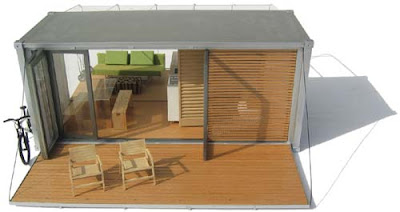In a recent post I explained that SINTO was developing a training programme called Preparing for the Future which was an integrated programme of workforce development events and activities. The goal was to match training outcomes with the strategic goals of the libraries in our region.
Of course for this to happen the libraries concerned have to have a clear idea of what their strategic goals are and for public libraries in particular this is often a problem. It's not that public libraries don't have strategic goals - on the contrary they often work under detailed statements of mission, goals, aims and objectives. The problem is that that they are often diverse and sometimes unclear. Librarians often feel that local councillors and senior officers don't understand what the role of the library is or could be but professional librarians themselves don't always agree on the fundamental role of the library service or what its future direction should be. Should the emphasis be on excellence or equity? Is the priority to get greater footfall and higher issues? Should the library service be measured by its contribution to other government agendas or against its own values?
A recent contribution to this debate is Rónán O'Beirne. Rónán is director for learning development at Bradford College and before that was a librarian with first Haringey Libraries and then Bradford Public Libraries. He has published From Lending to Learning: the development and extension of public libraries.
Rónán's thesis is that the role of the library has less to do with books and more to do with "literacies, people, the human condition and social justice - and … much to do with learning." Learning for Rónán is not about following accredited courses to obtain qualifications but rather with informal lifelong learning. Public libraries should exist not only to give people access to the resources they need for learning but to provide a learning space, develop information literacy skills and provide support and guidance. He suggests for example that public libraries should provide their users with access to a Virtual Learning Environment such as Moodle.
Rónán warns against the tendency to equate the iconic significance of the book with the public library, claiming that "it bestows upon the public library a reverence it rarely deserves based solely on the books it stores." Instead the library "needs to focus on learners. This shift of emphasis needs to be championed by library leaders and set before the users of the service in a clear way". He also says that in calling for a raised priority for learning we must challenge the book-lending role of the public library.
Such statements will inevitably attract criticism from those who see book lending as the libraries' main function. Tim Coates is not alone in criticising "the constant denial by librarians of the connection with books that has not only led to libraries having less books, but to the public finding libraries to be less useful, and thence to them being closed". However I believe that this is not a denial of the connection with books but instead an argument that libraries are about more than books, they are about how and why people use and value books – and that is for learning. Rónán draws attention to the role of the reference library and points out the paradox that the explosion of information, rather than increasing the role of the reference library, is making it redundant in its current form. However this does show that libraries did have a valid role that was not about lending books and suggests that a new learning role could develop that also is not obsessed with loans.
Rónán's aim is to free librarians from the burden of diverse goals that often relate to other people's agendas and replace these with a single coherent goal that looks back to the traditional roots of public librarianship and forward to the needs of our communities and the imperatives of technology. He is critical of some current professional thinking and there is much in this book to take issue with - but that is part of its value. You might disagree with this book but the concept of a clearly defined "big idea" at the heart of what it is that public libraries are all about is attractive and powerful.
From Lending to Learning is published by Chandos.
Archives
-
▼
2011
(297)
-
▼
April
(20)
- From Lending to Learning
- Modern Minimalist Home Design | Bathroom Design | ...
- The ArkHaus! Ellsworth, Maine Property!
- Japan Shipping Container Homes
- Closed for training
- Ecopod Shipping Container Home
- Container Home Port A Bach
- Container Home Transatron Container project
- BlueBrown Container Home Thailand
- Cordell Container Home by Christopher Robertson
- Bark Design All Terrain Cabin (ATC) Container Home
- Hive Modular Holyoke Corten Cabin Minnesota Contai...
- Container Pool
- Power Smart Advertising in Shipping Container
- Container Shop
- Container Display
- Future ready - in Manchester
- Container Home
- Meka West Village Container Home
- IC Green Container Pool Changing Room
-
▼
April
(20)















































